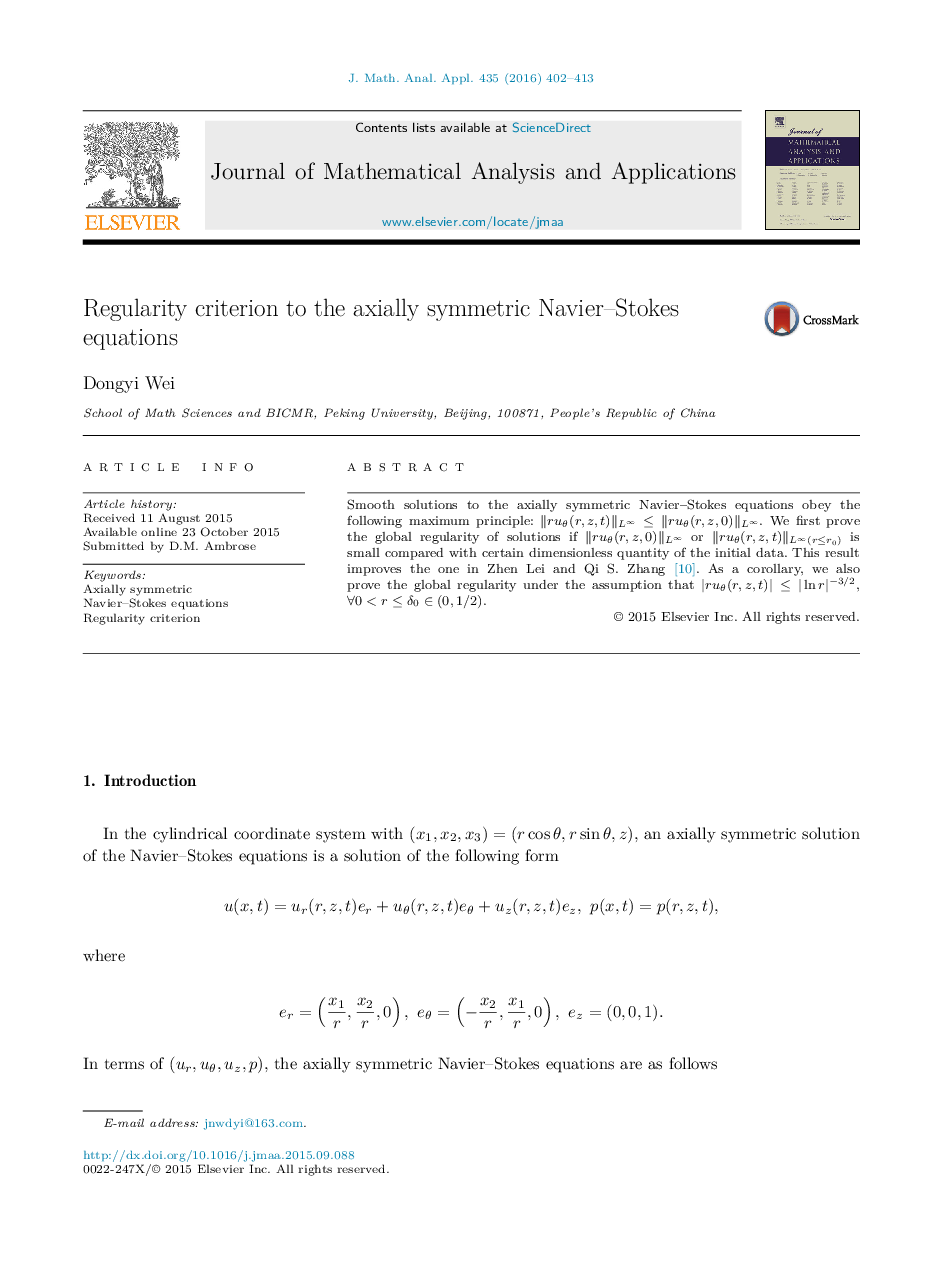| Article ID | Journal | Published Year | Pages | File Type |
|---|---|---|---|---|
| 4614597 | Journal of Mathematical Analysis and Applications | 2016 | 12 Pages |
Abstract
Smooth solutions to the axially symmetric Navier–Stokes equations obey the following maximum principle: ‖ruθ(r,z,t)‖L∞≤‖ruθ(r,z,0)‖L∞‖ruθ(r,z,t)‖L∞≤‖ruθ(r,z,0)‖L∞. We first prove the global regularity of solutions if ‖ruθ(r,z,0)‖L∞‖ruθ(r,z,0)‖L∞ or ‖ruθ(r,z,t)‖L∞(r≤r0)‖ruθ(r,z,t)‖L∞(r≤r0) is small compared with certain dimensionless quantity of the initial data. This result improves the one in Zhen Lei and Qi S. Zhang [10]. As a corollary, we also prove the global regularity under the assumption that |ruθ(r,z,t)|≤|lnr|−3/2|ruθ(r,z,t)|≤|lnr|−3/2, ∀0
Related Topics
Physical Sciences and Engineering
Mathematics
Analysis
Authors
Dongyi Wei,
